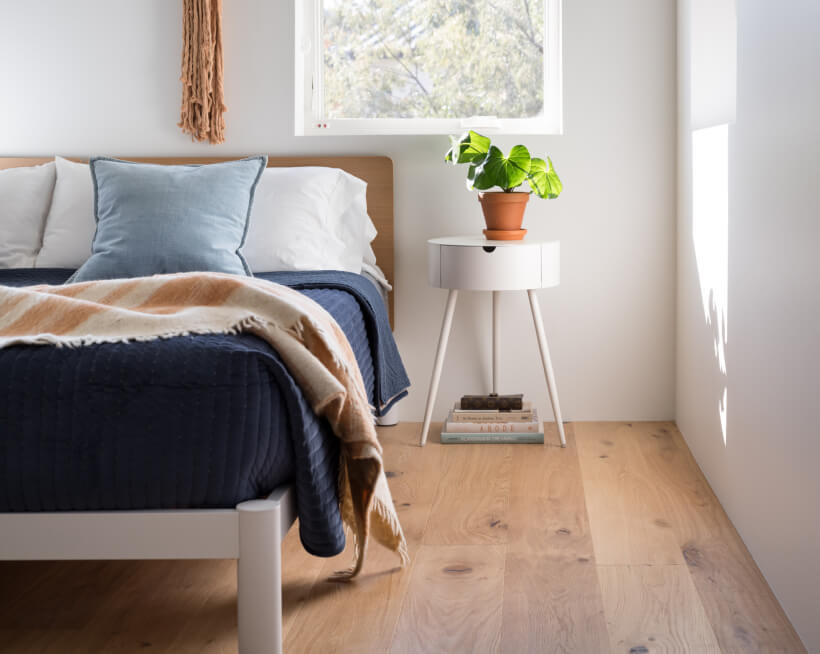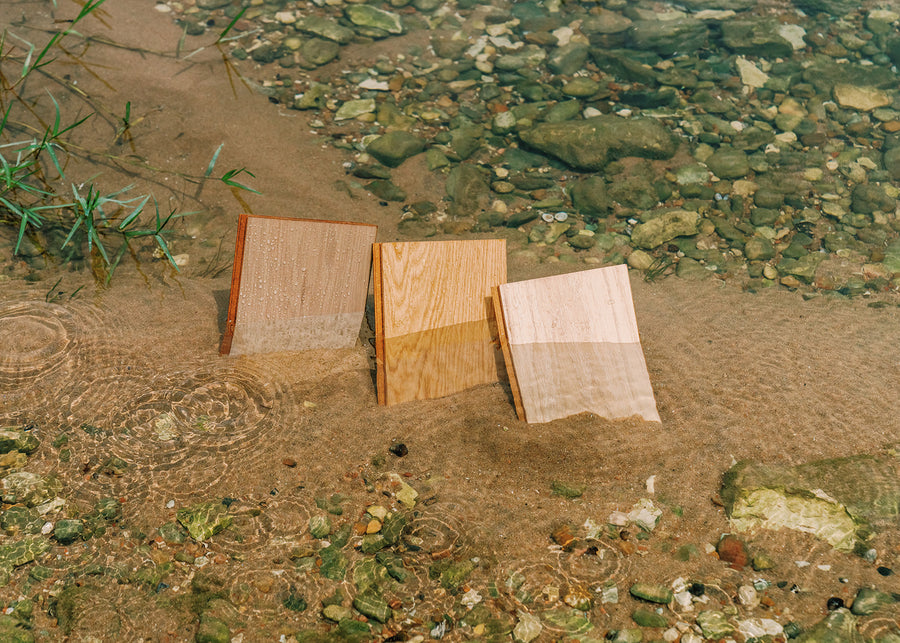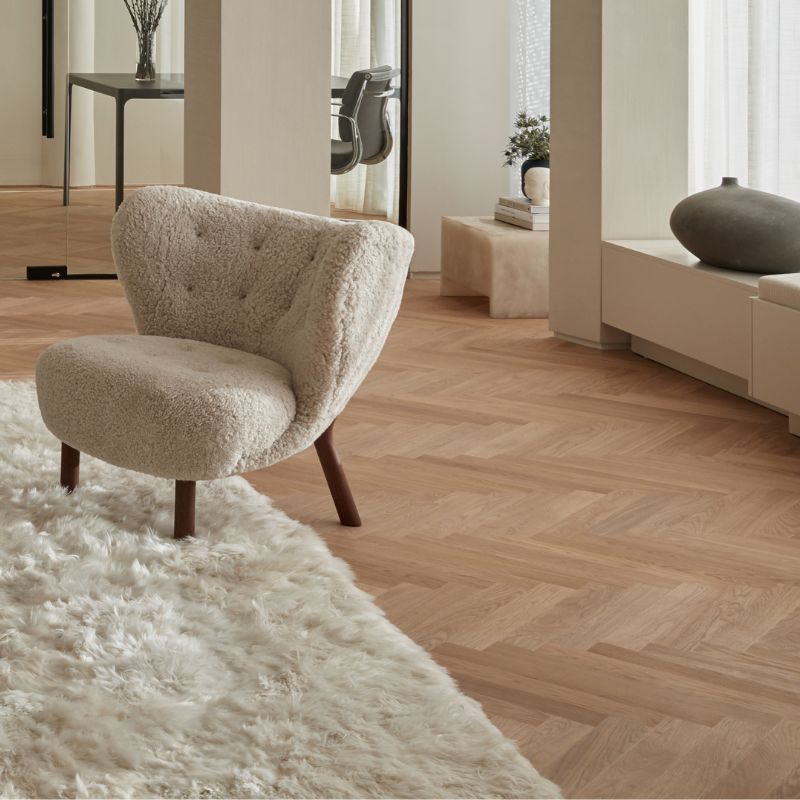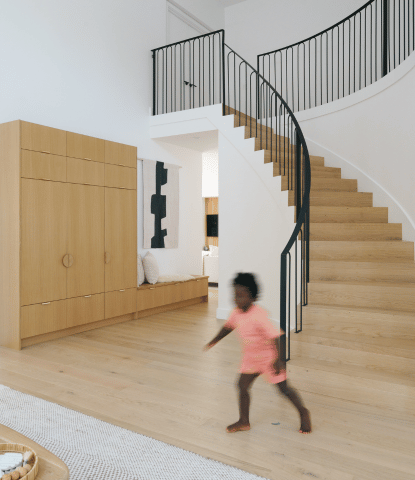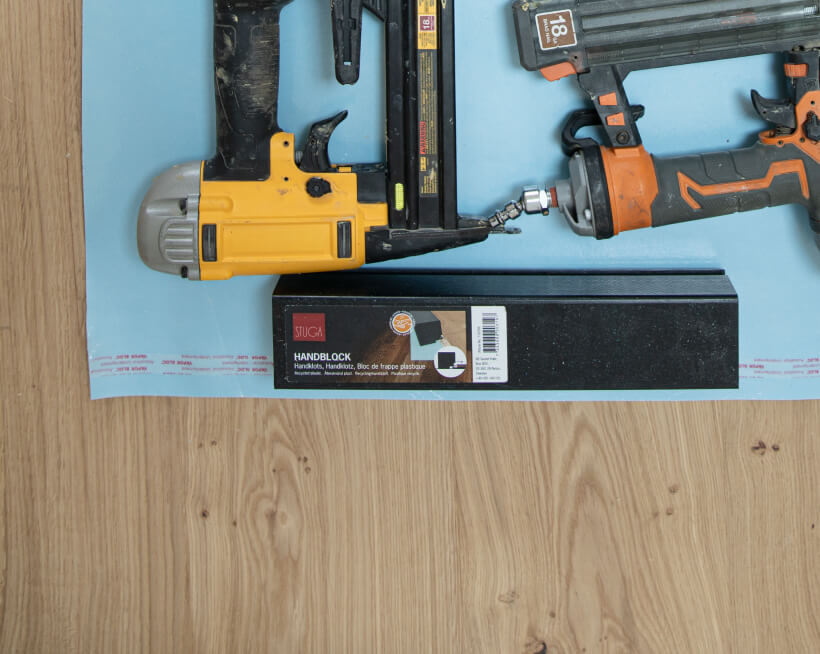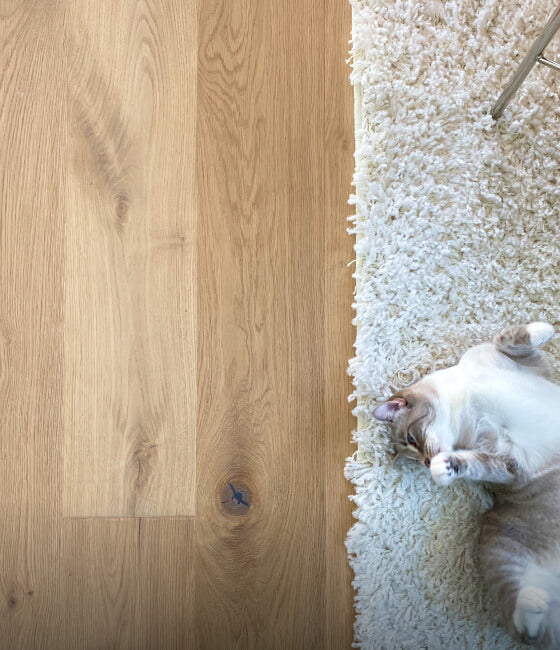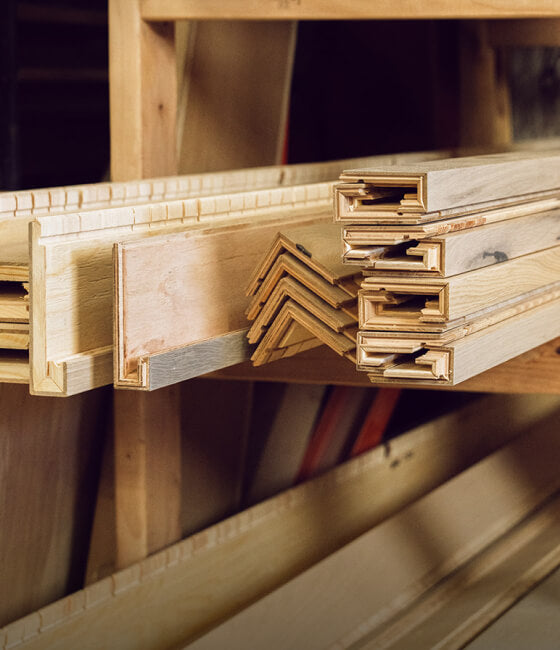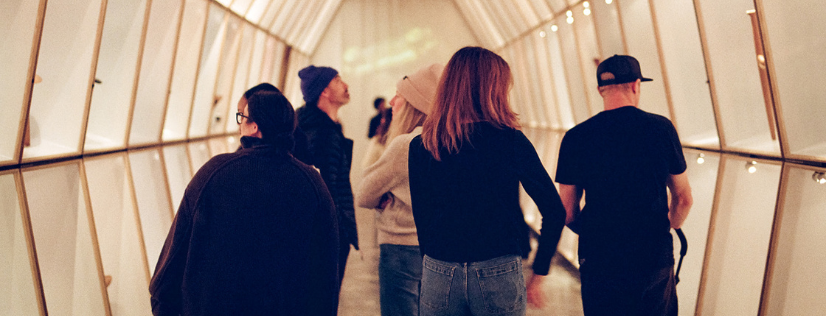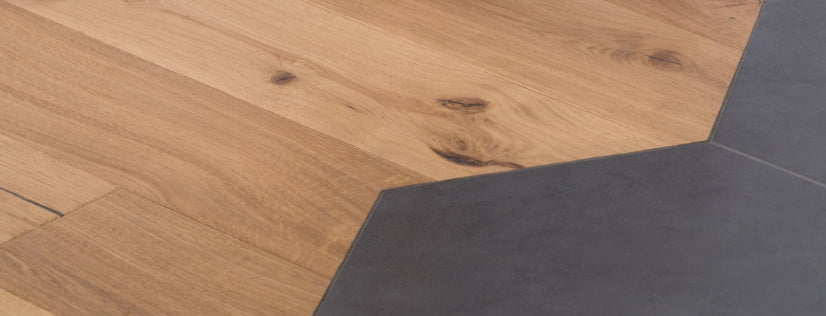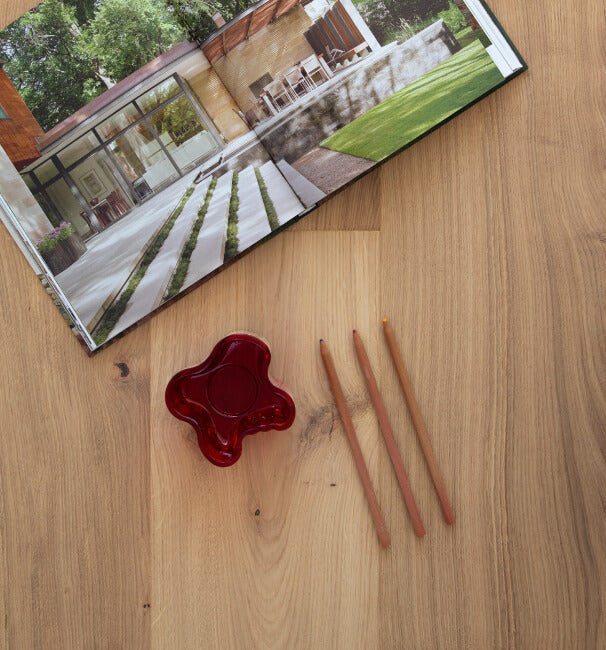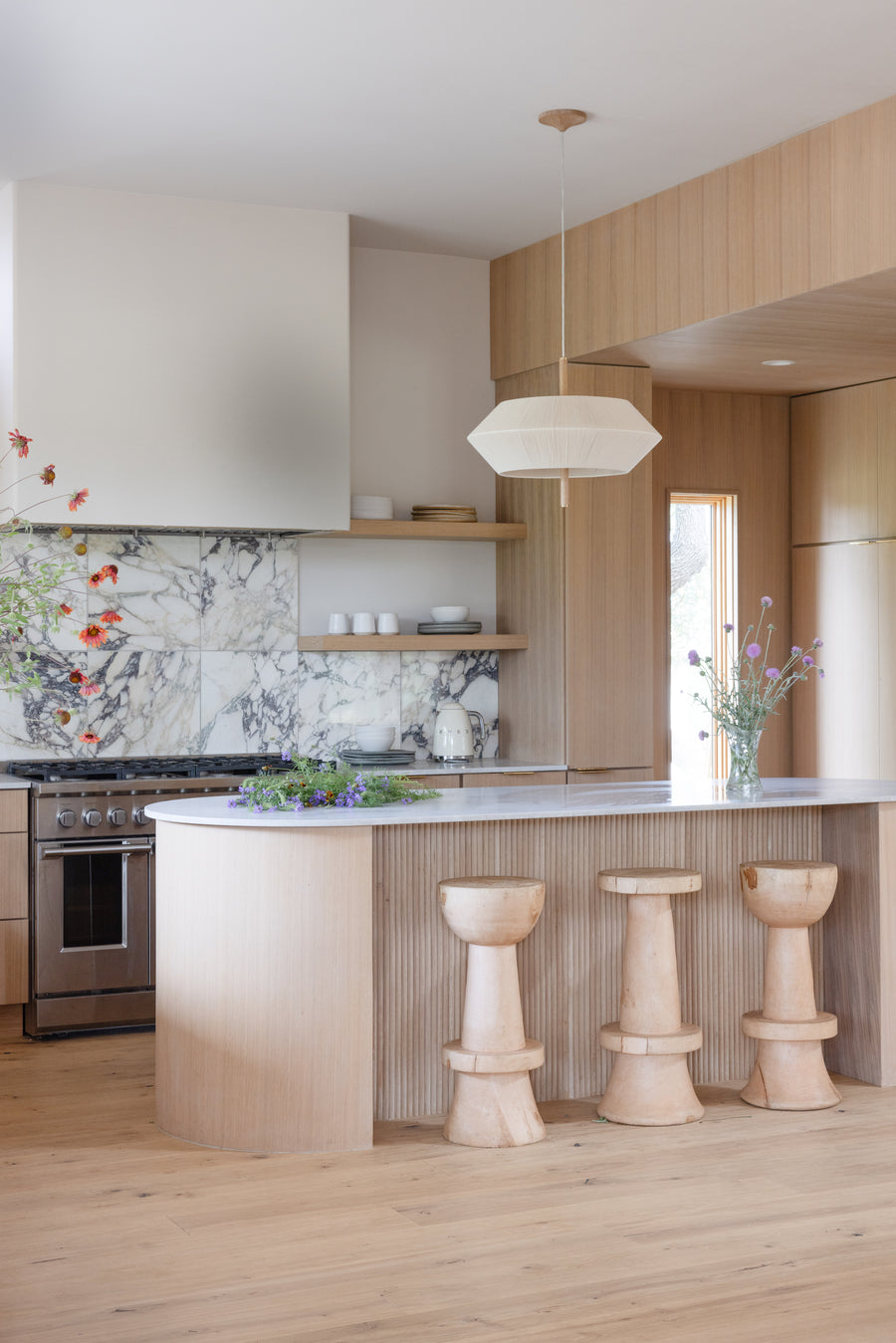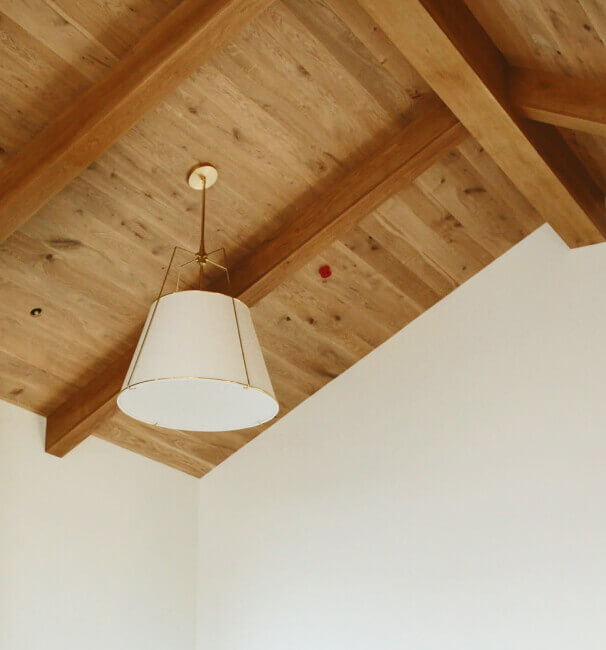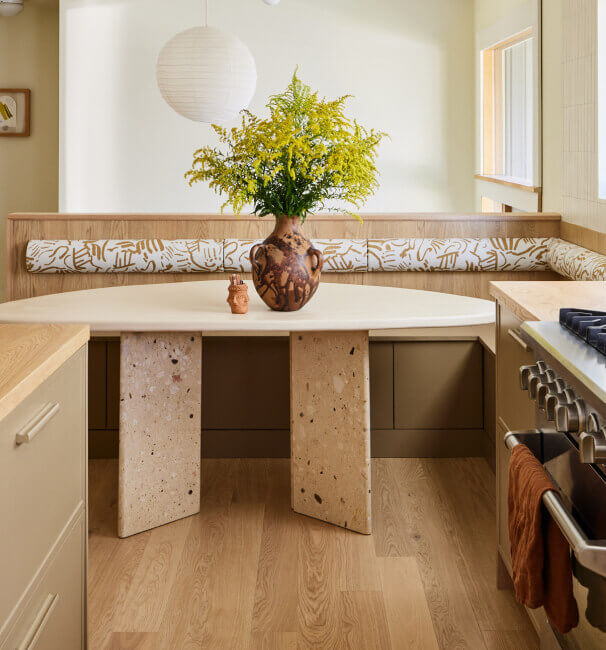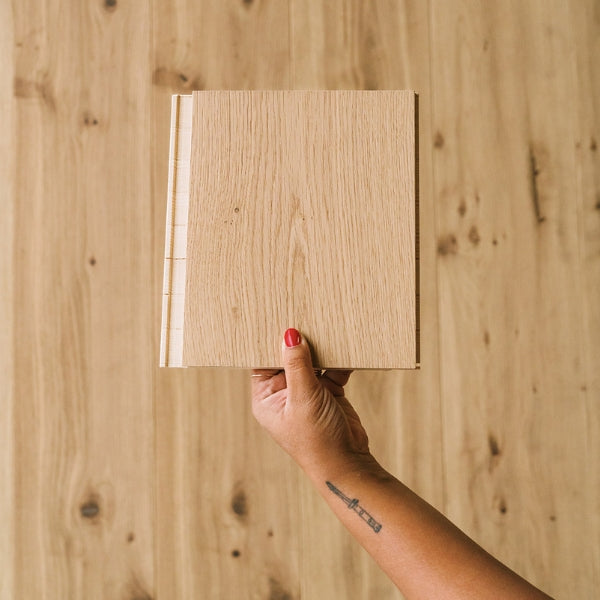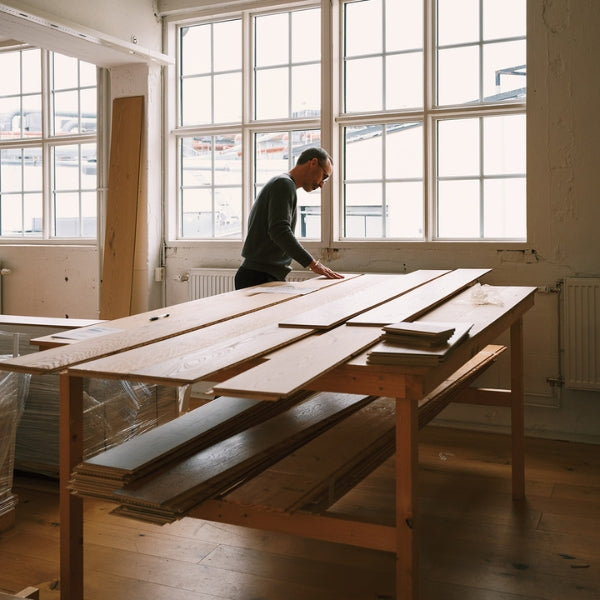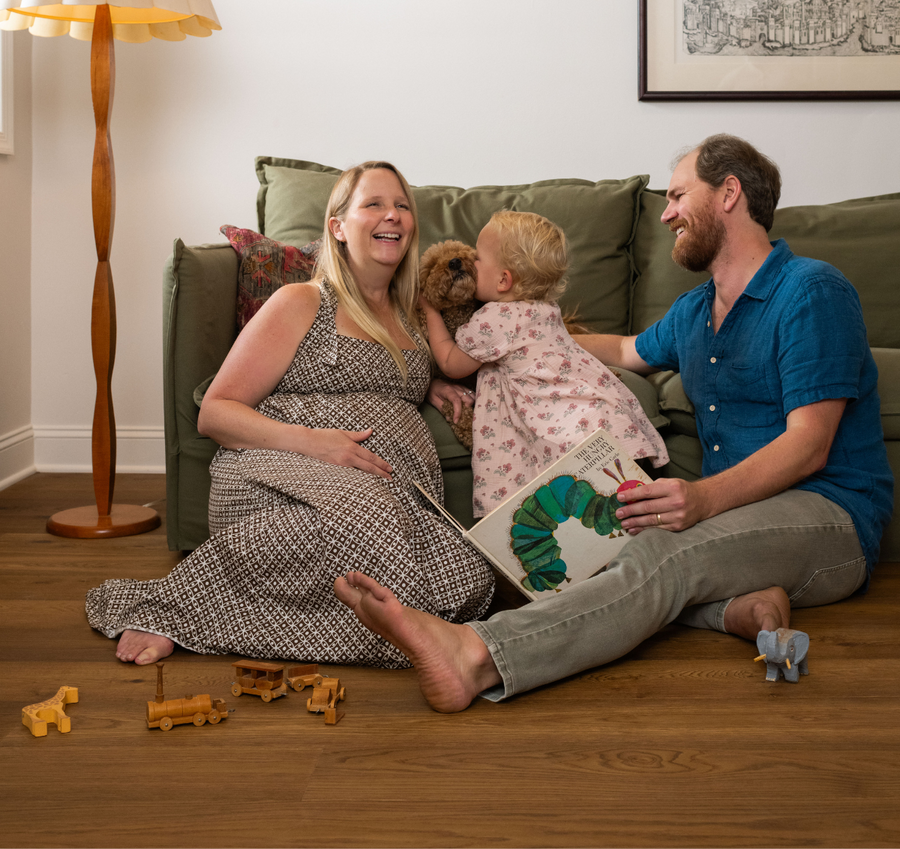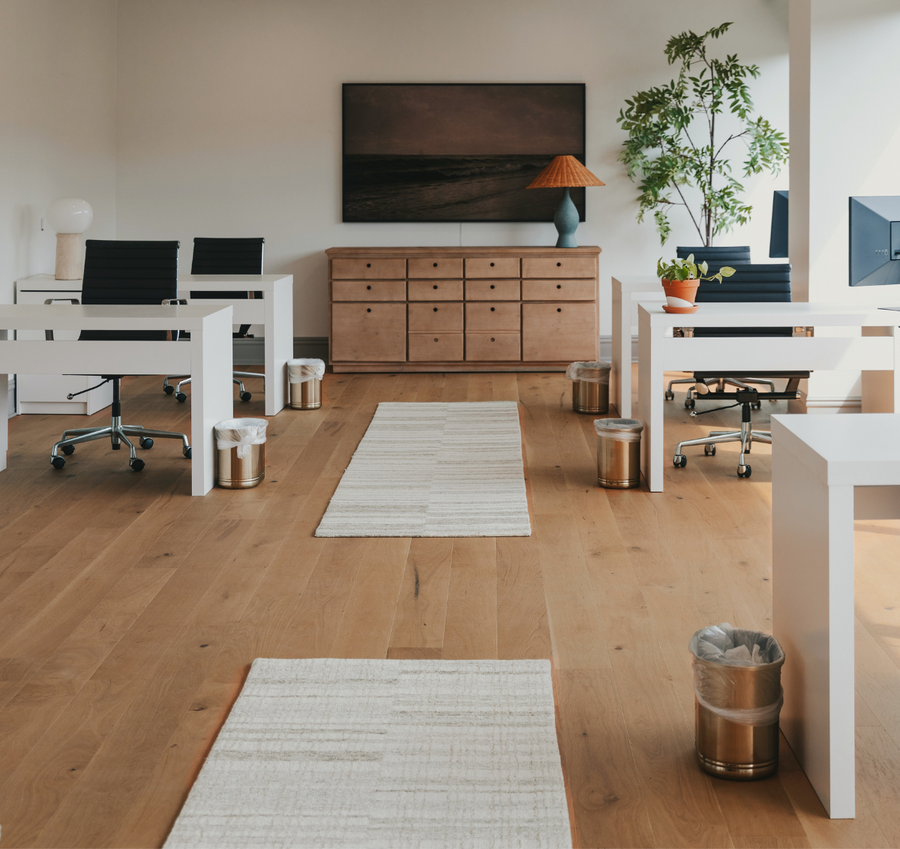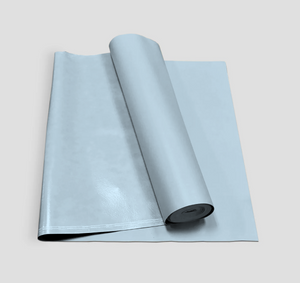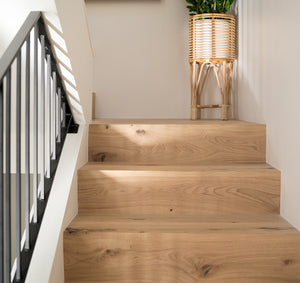May 19, 2022
A Comprehensive Guide to Flooring Transition Strips
by Mallory Recor
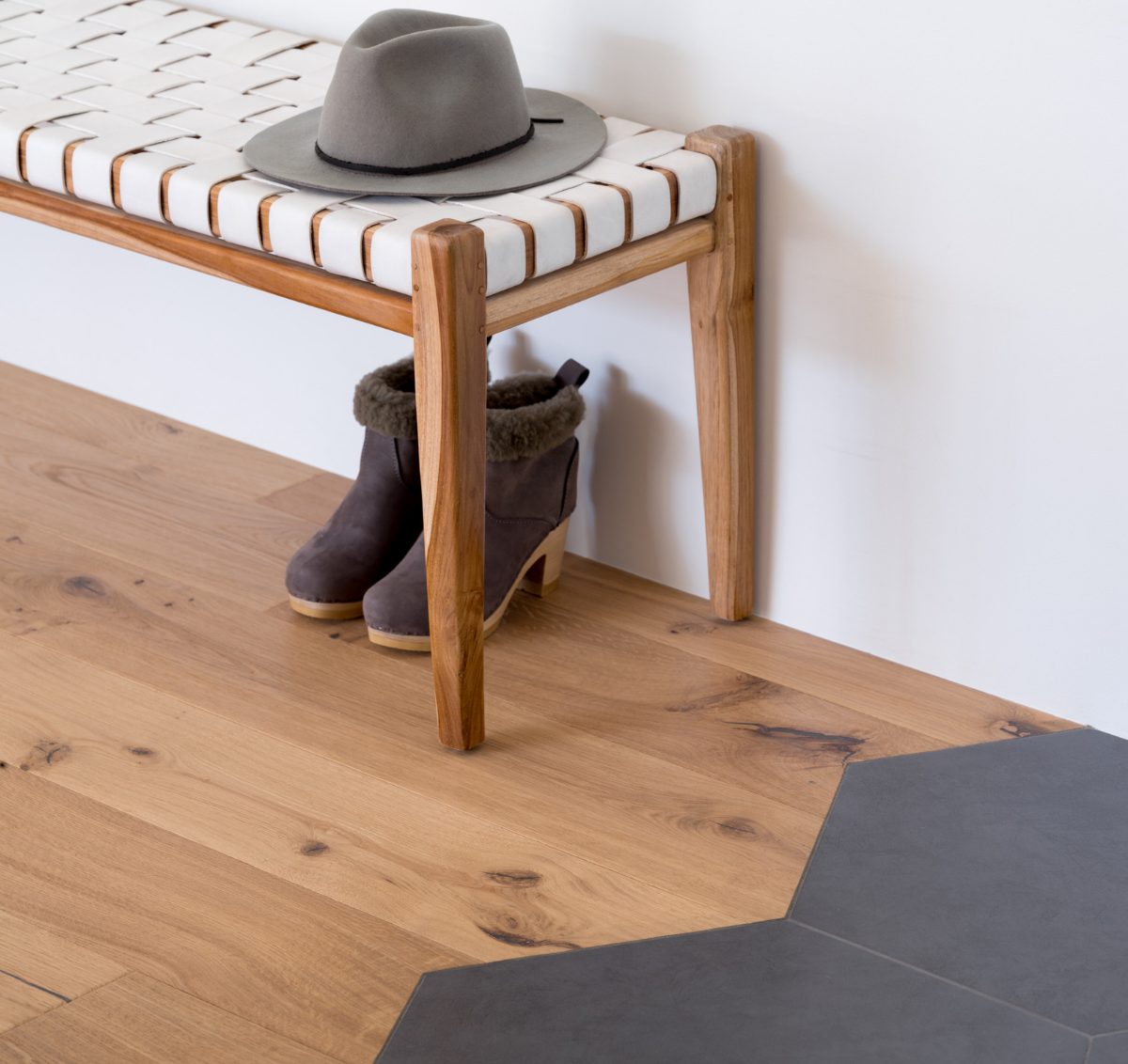
We love a beautiful, seamless floor. It is so stunning seeing the wood continuing down hallways and into rooms. A smooth transition from wood floor to a tiled bathroom is what we dream of. While the flooring industry in general likes to add transitions to every doorway, it’s our preference and recommendation to forgo the transitions all together for a smooth, clean look.
Can you ditch the transitions?
Transitions can be clunky and distracting. When you’re excited about installing your new beautiful floor, clunky and distracting are two words you’d probably steer clear of. We prefer to minimize, if not completely forgo, the use of transitions and (believe it or not) it’s completely feasible.
Here at Stuga, we like to live where form meets function as part of our core belief that good design is a human right. You may have been told that you need to have a transition strip at your doorways, but in many cases they’re not necessary! Glued or stapled floors never require a break, and floating Stuga floors only need one if the span of your room is wider than 80’ x 160’.
In another effort to minimize the use of transitions, we recommend undercutting solid objects like your fireplace to run floors underneath, rather than adding transitions. This will ensure that nothing distracts from the beauty of your home.
What about when your floor needs a transition strip?
Sometimes you still need a transition piece, and though we’ve just discussed the merits of not using them, they can still be done beautifully. The use of a header board can add character and create a flawless transition when stapling or gluing your floors. Make sure to check out our blog post for more beautiful transition ideas!
Sometimes a transition strip is unavoidable. At any exterior door, you can use our square nose for a clean profile. It’s great for running your wood floors up to metal. You can also use a square nose at a fireplace, if it isn't possible to undercut your stone or tile. This piece will provide a clean look.
Another time transition pieces are unavoidable are when there is a need to cover an expansion gap necessary for a floating installation. Here, we recommend to use quarter round, shoe mold, or square trim at the bottom of your baseboards, painted to match the baseboards for a nice contrast to your floor.
A t mold can be used in doorways or any transition where your Stuga floors are the same height as the other floor, when it isn’t possible to go without a transition. This might occur with a floating floor when swapping to tile or carpet. If the two floors are uneven, an overlap reducer is a good option.
While we firmly believe that transitions can be interesting and creative, and might not even be necessary, we do have a full line of stained to match transition strips available on our site. If you decide to nix the transition for something more beautiful, don’t forget to tag #EyeScandi — we love to see the unique ways our floors are being installed!

